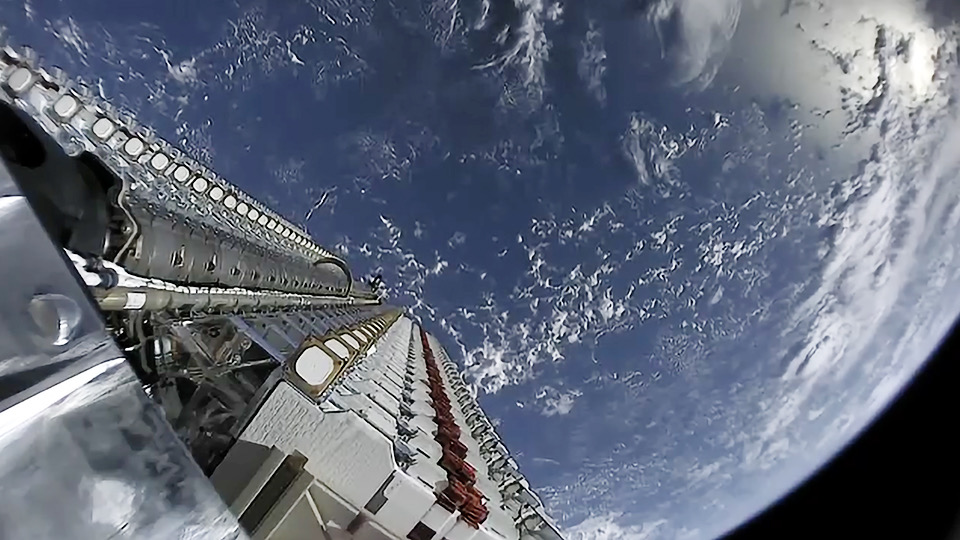Here’s How Musk’s SpaceX Expands His Starlink Network (But Some Puff)

The Starlink constellation is about to triple in size. Elon Musk's SpaceX company won approval from US regulators to add 7,500 satellites to its satellite fleet despite much criticism (from NASA and SpaceX's competitors). All the details
SpaceX poised to triple its Starlink constellation providing satellite internet service .
The Federal Communications Commission (FCC), the US telecommunications regulator, has approved a request by Elon Musk's SpaceX to add 7,500 next-generation satellites to the Starlink constellation.
Starlink currently consists of more than 3,200 operational satellites in orbit hundreds of miles above the planet, providing broadband Internet service to hundreds of thousands of ground-based customers in dozens of countries. “The service had around 500,000 subscribers in June. The company has also steadily expanded Starlink 's product offering, selling services to residential, commercial, RV, marine and airline customers. Notably, the Ukrainian military has come to depend on Starlink for communications, though Musk has complained about the cost of that effort .
SpaceX had asked the US regulator for approval to launch 30,000 larger and better performing satellites than those deployed since 2020. Meanwhile, rival satellite operators including Amazon and OneWeb have raised controversy over fears that Starlink's architecture lead to interference with existing or planned communication networks.
The FCC has imposed a cap on the number of satellites in the second generation of SpaceX's Starlink constellation, also known as Gen2, in order to "address concerns about orbital debris and space safety" by approving the launch of less than a third of the required satellites. .
Meanwhile, the largest satellite network in history is preparing to become even bigger.
All the details.
PERMISSION OF THE FCC
The Federal Communications Commission has given SpaceX permission to deploy and operate up to 7,500 satellites operating at altitudes of 525, 530 and 535 km, at 53, 43 and 33 degrees, respectively, using frequencies in the Ku and Ka bands. The green light came after SpaceX filed an application in 2020 for permission to operate a constellation of 29,988 second-generation (Gen2) non-geostationary orbit (NGSO) satellites. The FCC granted clearance in 2018 for the launch of 12,000 first generation Starlink satellites.
THE FEARS OF NASA, AND NOT ONLY
The request proved controversial for a variety of reasons.
In fact, the FCC specified that it had taken into consideration the concerns raised by competitors, such as SES, O3b and Kuiper Systems (of Amazon), Viasat as well as Dish Network. These concerns ranged from the danger posed by possible orbital debris, or about space safety, the protection of previously authorized systems and possible interference problems. This is why the number of satellites allowed is lower than SpaceX's request, the FCC said. In the end, the regulator approved only 7,500 satellites of the 30,000 requested.
Specifically, NASA is concerned about handlingspace traffic and debris as more satellites arrive in orbit ( there are currently more than 5,000 operational spacecraft circling the Earth). In recent times astronomers have complained that Starlink interferes with the observations of ground and space telescopes due to the brightness of the satellites.
SpaceX must also meet a number of conditions, including mitigation actions to avoid space collisions and coordination actions to ensure there is no interference or spectrum rights violations.
THE ROADMAP OF SPACEX WITH STARLINK
SpaceX has until 2028 to deploy at least half of the newly approved spacecraft, or it could lose its license to use them. That could prove challenging: Musk said the company's Starship rocket will be needed to deploy these satellites at scale, as they weigh more than a metric ton, about four to five times the roughly 260kg mass of current Starlink satellites. The spacecraft, which could launch perhaps 100 Gen2 satellites at once, hasn't yet gone into orbit, while SpaceX's Falcon 9 rocket can only carry about 20.
“The deployment of the new satellites is key to the future of Starlink as a company. The network does not yet have positive cash flow, according to executives, and its capacity is already being strained in key markets,” comments Quartz .
This is a machine translation from Italian language of a post published on Start Magazine at the URL https://www.startmag.it/innovazione/ecco-come-spacex-di-musk-espande-la-sua-rete-starlink-ma-ce-chi-sbuffa/ on Mon, 05 Dec 2022 12:17:14 +0000.
